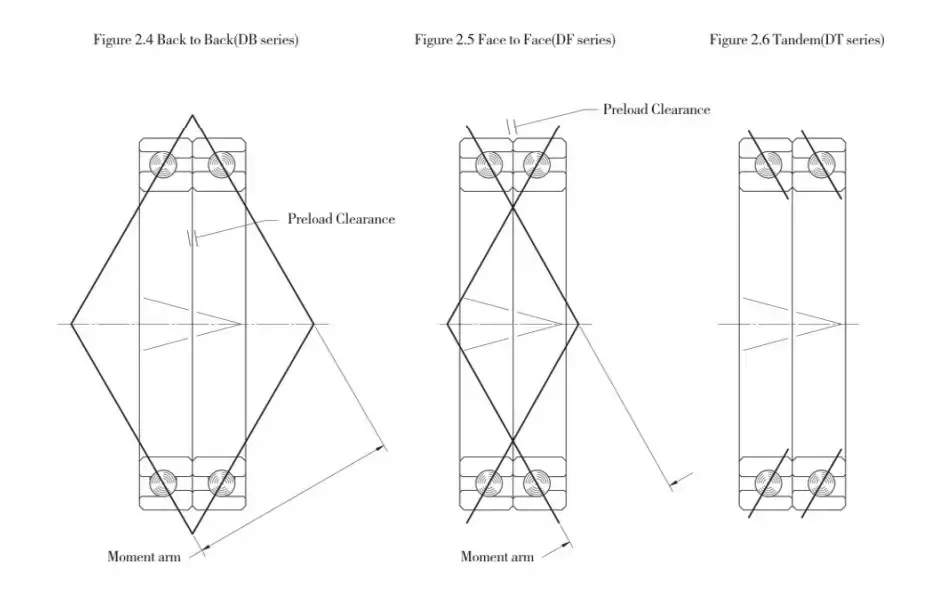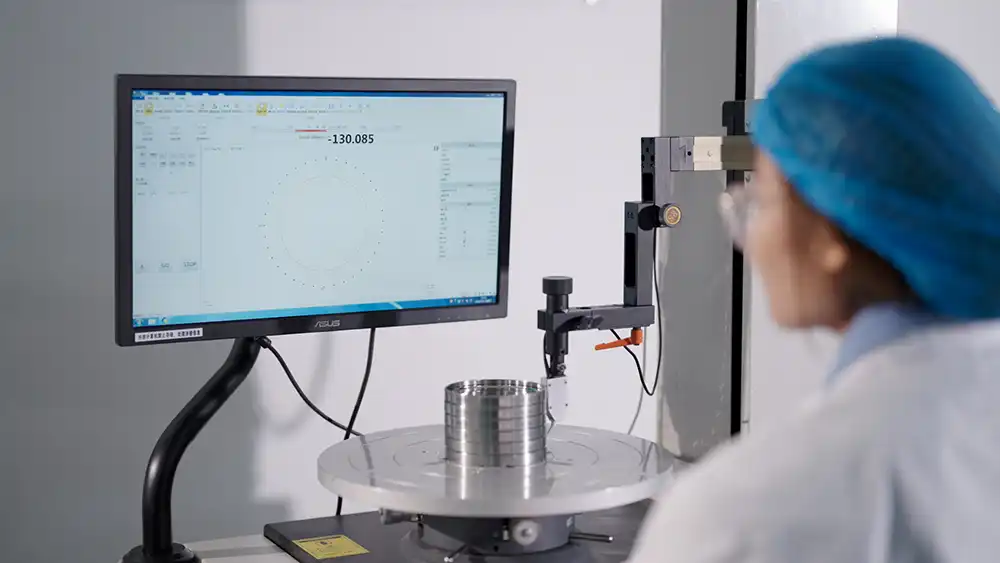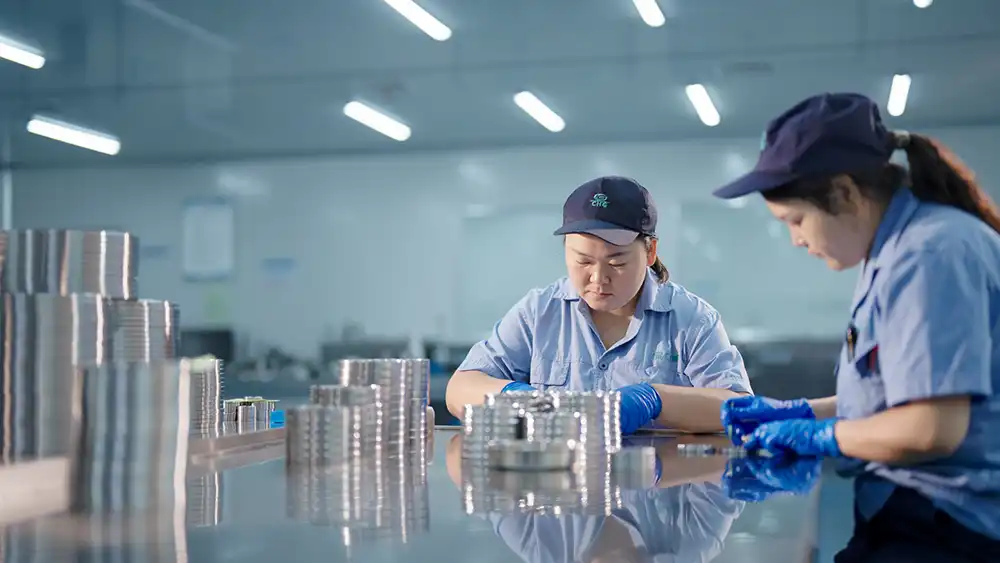What Are The Benefits Of Using Super-Precision Angular Contact Ball Bearings In Machine Tools?
Super-precision angular contact ball bearings represent a cornerstone of modern machine tool technology, offering unparalleled performance characteristics that significantly enhance manufacturing precision and efficiency. These specialized bearings are engineered to maintain exceptional accuracy under high-speed operations while handling both axial and radial loads with remarkable stability. Their implementation in machine tools has revolutionized the capability to achieve superior surface finishes, tighter tolerances, and enhanced operational reliability in various manufacturing processes.

The key benefits of these bearings extend beyond basic functionality. They provide exceptional rotational accuracy, with runout values often measured in micrometers, enabling machine tools to produce components with unprecedented precision. This precision is particularly crucial in industries such as aerospace, medical device manufacturing, and semiconductor production, where component tolerances are increasingly stringent.
Furthermore, these bearings offer superior thermal stability, maintaining their geometric accuracy even under varying temperature conditions. This characteristic is essential for maintaining consistent machining accuracy during long production runs. The reduced friction characteristics of super-precision bearings also contribute to lower heat generation, which helps preserve the dimensional stability of both the bearing and the machine tool structure.
How do angular contact ball bearings differ from regular ball bearings?
The fundamental distinction between angular contact ball bearings and conventional ball bearings lies in their unique design architecture and load-bearing capabilities. Angular contact bearings feature raceways that are displaced relative to each other in the direction of the bearing axis, creating a contact angle that enables them to handle combined loads more effectively. This sophisticated design allows for greater precision and stability in machine tool applications.

The internal geometry of angular contact bearings is precisely engineered to maintain optimal ball-to-raceway contact under various operating conditions. The contact angle, typically ranging from 15 to 25 degrees, creates a load path that efficiently distributes forces throughout the bearing structure. This design enables superior axial load capacity while maintaining excellent radial load handling capabilities, making them ideal for high-precision applications.
Furthermore, these bearings incorporate advanced materials and manufacturing techniques that set them apart from standard bearings. The use of ceramic balls, for instance, reduces inertia and enables higher operating speeds while minimizing thermal expansion. The raceway surfaces are finished to exceptional smoothness levels, often achieving surface roughness values below 0.1 micrometers. This superior finish reduces friction, minimizes wear, and extends bearing service life.

The precision class ratings of angular contact bearings also exceed those of standard bearings, with many achieving P4 or even P2 tolerance levels. This exceptional accuracy is maintained through sophisticated manufacturing processes, including controlled environment assembly and specialized heat treatment procedures that ensure dimensional stability under varying operating conditions.
One significant advancement in angular contact bearing technology is the development of hybrid designs that combine ceramic rolling elements with steel rings. These hybrid bearings offer several advantages over all-steel configurations, including reduced centrifugal forces at high speeds, improved electrical insulation properties, and enhanced resistance to lubricant film breakdown. The ceramic balls' lower density reduces the centrifugal loading on the outer ring at high speeds, enabling higher rotational speeds while maintaining stability.
The raceway profiles of angular contact bearings are also specially optimized to achieve ideal load distribution across the rolling elements. Advanced computational modeling techniques are employed during the design phase to simulate bearing behavior under various loading conditions, leading to optimized raceway profiles that maximize load capacity while minimizing stress concentrations.
What factors influence the performance of super-precision bearings in high-speed applications?
Several critical factors determine the performance capabilities of super-precision bearings in high-speed machine tool applications. The primary considerations include operating speed, preload conditions, lubrication systems, and thermal management strategies. Understanding and optimizing these factors is essential for achieving optimal bearing performance and longevity.

Operating speed represents a crucial parameter that affects bearing behavior. At high speeds, centrifugal forces and gyroscopic moments become significant factors that influence bearing performance. The bearing design must account for these forces through appropriate internal geometry modifications and the selection of suitable cage designs. Advanced cage materials, such as polyamide or brass, are often employed to ensure stable operation at high speeds while minimizing friction and wear.
The cage design itself plays a crucial role in high-speed performance. Modern cages incorporate sophisticated features such as optimized pocket geometries that improve lubricant distribution and reduce ball skidding. Some designs include integrated lubricant reservoirs that help maintain adequate lubrication under challenging operating conditions. The material selection for cages has evolved to include high-performance polymers that offer excellent wear resistance and low friction characteristics.
Preload optimization plays a vital role in achieving desired performance characteristics. The correct preload setting ensures proper ball-to-raceway contact, minimizes radial and axial play, and maintains rotational accuracy. Modern preload mechanisms often incorporate temperature compensation features that adjust preload forces as operating conditions change, maintaining optimal performance across various speed ranges.
Lubrication systems for super-precision bearings require careful consideration. Oil-air lubrication systems have become increasingly popular for high-speed applications, providing precise lubricant delivery while minimizing power losses. These systems must be properly designed to ensure adequate lubrication reaches all critical surfaces while avoiding excessive oil quantity that could increase friction and heat generation.
Advanced lubrication technologies now include sophisticated oil-air mixing systems that can adjust lubricant delivery based on operating conditions. Some systems incorporate sensors that monitor oil consumption and contamination levels, enabling real-time adjustment of lubrication parameters. The development of new lubricant formulations specifically designed for high-speed applications has also contributed to improved bearing performance and longevity.
Thermal management represents another crucial aspect of bearing performance. Heat generation at high speeds must be effectively controlled to maintain dimensional stability and prevent premature bearing failure. Advanced cooling systems, including directed oil jets and temperature-controlled housing designs, help maintain optimal operating temperatures even under demanding conditions.
How can proper mounting and maintenance practices extend bearing service life?
The service life and performance of super-precision angular contact ball bearings heavily depend on proper mounting procedures and ongoing maintenance practices. Implementing correct installation techniques and following recommended maintenance protocols can significantly extend bearing life while maintaining optimal performance characteristics.

Proper mounting begins with thorough preparation of the mounting surfaces and careful handling of the bearing components. The shaft and housing seats must be manufactured to specific tolerances and surface finish requirements to ensure proper fit and alignment. Cleaning procedures must be meticulously followed to prevent contamination during installation, as even microscopic particles can compromise bearing performance.
Modern mounting techniques increasingly utilize laser alignment systems and digital measuring instruments to achieve precise bearing positioning. These technologies enable real-time verification of bearing alignment during installation, helping prevent misalignment-related failures. Some manufacturers have developed smart mounting tools that provide digital feedback during the mounting process, ensuring correct preload application and alignment.
The mounting process itself requires specialized tools and techniques to ensure proper alignment and preload application. Temperature-controlled mounting methods are often employed for larger bearings to facilitate assembly without risking component damage. The use of precision measuring instruments during installation helps verify correct mounting parameters and initial preload settings.
Maintenance strategies for super-precision bearings must be proactive rather than reactive. Regular monitoring of operating parameters, including temperature, vibration levels, and lubricant condition, helps identify potential issues before they lead to bearing failure. Advanced condition monitoring systems, incorporating sensors and data analysis capabilities, enable predictive maintenance approaches that optimize bearing service life.
The implementation of Industry 4.0 technologies has revolutionized bearing maintenance practices. Smart sensors integrated into bearing assemblies can now provide continuous monitoring of critical parameters such as temperature, vibration, and acoustic emissions. This data is analyzed using sophisticated algorithms that can detect subtle changes in bearing condition, enabling early intervention before significant damage occurs.
Lubrication management represents a critical aspect of bearing maintenance. Regular lubricant analysis helps ensure proper oil condition and early detection of potential wear issues. Filtration systems must be regularly maintained to prevent contamination, and lubricant replacement intervals should be carefully scheduled based on operating conditions and monitoring results.
Advanced filtration technologies now incorporate multiple stages of filtration with real-time monitoring of filter condition and contamination levels. Some systems include automatic particle counters that provide continuous feedback on lubricant cleanliness. The development of biodegradable lubricants has also addressed environmental concerns while maintaining the high performance required for precision applications.

Luoyang Huigong Bearing Technology Co., Ltd. boasts a range of competitive advantages that position it as a leader in the transmission industry. Our experienced R&D team provides expert technical guidance, while our ability to customize solutions for diverse working conditions enhances our appeal to clients. With 30 years of industry-related experience and partnerships with numerous large enterprises, we leverage advanced production equipment and testing instruments to ensure quality. Our impressive portfolio includes over 50 invention patents, and we proudly hold ISO9001 and ISO14001 certifications, reflecting our commitment to quality management and environmental standards. Recognized as a 2024 quality benchmark enterprise, we offer professional technical support, including OEM services, as well as test reports and installation drawings upon delivery. Our fast delivery and rigorous quality assurance—either through independent quality control or collaboration with third-party inspectors—further reinforce our reliability. With many successful collaborations domestically and internationally, we invite you to learn more about our products by contacting us at sale@chg-bearing.com or calling our hotline at +86-0379-65793878.
References:
1. SKF Group. (2023). "Super-precision Angular Contact Ball Bearings: Technical Principles and Guidelines."
2. NSK Americas. (2024). "Machine Tool Bearing Selection and Mounting Guide."
3. Schaeffler Technologies. (2023). "High-Speed Bearing Applications in Modern Machine Tools."
4. JTEKT Corporation. (2023). "Precision Bearing Technology for Advanced Manufacturing."
5. NTN Corporation. (2024). "Super Precision Bearings for Machine Tool Applications."
6. Timken Company. (2023). "Engineering Manual: Super Precision Bearings."
7. FAG Bearings. (2024). "Technical Guide: Precision Bearing Installation and Maintenance."
8. IKO International. (2023). "Advanced Bearing Solutions for High-Precision Applications."
9. Journal of Mechanical Engineering Science. (2023). "Advances in Super-precision Bearing Technology."
10. International Journal of Machine Tools and Manufacture. (2024). "Optimization of High-Speed Bearing Systems."

